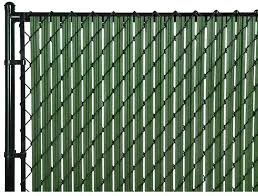Setting Fence Posts in Winter
Setting fence posts in winter might seem like a daunting task, but for many, it is a necessary chore that cannot wait for the warmer spring months. Despite the challenges presented by cold weather, with proper preparation and techniques, one can successfully install fence posts even in the dead of winter.
Firstly, the type of soil in your area plays a crucial role in the ease of installing fence posts during the winter months. Frozen ground can be particularly difficult to work with. When the temperature drops significantly, the soil can harden into an almost concrete-like substance, making it nearly impossible to dig holes for posts. A practical solution is to wait for a slight thaw in the ground or to use specialized tools like a post hole auger that can break through the ice. Alternatively, consider using a shovel to remove snow and thaw the ground beneath. In mild winter climates, this may be manageable, while harsher conditions may require a different approach.
Safety is paramount when working in winter conditions. The surface can be slippery, and frostbite is a real concern when handling metal tools or working without gloves. Dressing in layers is essential to maintain body heat, and waterproof boots can keep your feet warm and dry. It's advisable to take frequent short breaks to warm up and prevent fatigue. Staying hydrated, despite the cold, is also important, as our bodies lose moisture through respiration even in low temperatures.
setting fence posts in winter

In addition to safety measures, it is crucial to have the appropriate materials on hand before starting the project. Choosing treated wood posts is essential to prevent rot and decay, which can be exacerbated by the moisture present in winter. Utilizing gravel instead of concrete for setting posts is another effective strategy during the winter months. Gravel allows for drainage, which can help alleviate issues with standing water and ice forming around the posts.
When it comes time to set the posts, the freezing temperature poses its own set of challenges. Quick-setting concrete can be a go-to solution; however, traditional cement can still work with some adjustments—mixing with warm water can facilitate the setting process. Following the manufacturer's instructions for temperature specifications is vital for ensuring that the concrete adheres properly in cold conditions.
Once the posts are set and secure, regular maintenance will be important. As the seasons change, keep an eye on the posts, checking for any signs of movement or displacement, especially after winter thaws.
In conclusion, while setting fence posts in winter presents several challenges, the task is achievable with proper planning and techniques. By respecting safety precautions, being mindful of weather conditions, and using suitable materials and tools, homeowners can successfully install fence posts, readying their properties for the upcoming seasons. Embracing this winter project can lead to a well-prepared outdoor space, no matter the temperature.
















